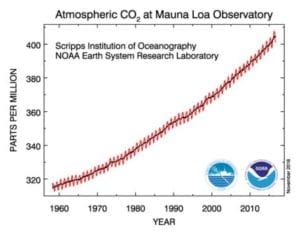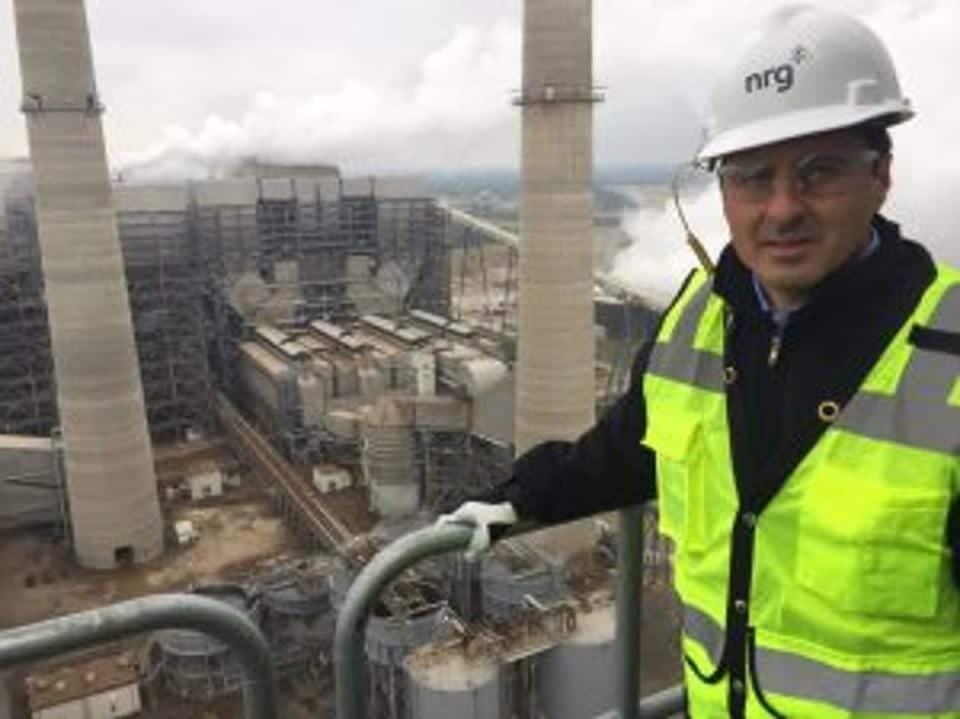Earlier in January
reported on: At a giant coal-burning power plant in Texas, NRG Energy has completed a $1 billion project called Petra Nova to capture carbon dioxide and use it to revive an old oilfield. If only oil prices would cooperate.
In Vanderbilt, Texas, there’s an old oil field called West Ranch. It was first developed in 1938, and it was a biggie — the field has given up about 400 million barrels in its life. Yet over the decades the oil flowing out of West Ranch had slowed to a trickle, barely enough to bother with. But the field’s owner, billionaire Jeffrey Hildebrand of Hilcorp Energy, knew there was a lot of black gold left to be coaxed out of West Ranch. All it needed was a good shot of carbon dioxide.
Why carbon dioxide? Because it provides the same thing to oil fields that it does to your Coke: effervescence. For decades oilmen have been reviving tired fields by pumping them up with CO2, which dissolves out stubborn oil while getting inself trapped (or sequestered) in the rock. In the Permian basin 400 miles to the west, they’ve long used CO2 piped in from naturally occurring reservoirs. Used to be there was no CO2 supply anywhere near Vanderbilt. But there is now. As of last week Hilcorp is now receiving and injecting 5,200 tons a day of carbon dioxide at West Ranch.
The CO2 comes in a pipeline 80 miles from its source: the 2,500 megawatt Parish Generating Station, that NRG Energy owns south of Houston. For $1 billion, NRG Energy and its partners, including Japanese oil company JX Nippon, have installed some incredible kit at Parish, which is one of the biggest coal-burning plants in America. The system, designed by Mitsubishi Heavy Industries, captures 10% of the giant power plant’s carbon dioxide emissions (bubbling flue gas through an amine solvent silo) then compresses the CO2 into the pipeline out to West Ranch. NRG claims it to be the biggest post-combustion carbon capture and sequestration project in the world.
There’s a kind of lipstick-on-a-pig elegance to it. They capture the CO2 from burning coal, then use that CO2 to goose out more oil, which itself combusts into CO2, which evades captures and gets into the atmosphere anyway. The rule of thumb was that you get an extra two barrels of oil out for every ton of carbon dioxide you put in. I haven’t reviewed the math, but have spoken to CCS engineers (at an unrelated company) who believe the amount of carbon sequestered in the oil fields could in many cases be greater than the carbon content of the oil recovered. Which would be really useful. Add up the holding capacity, and oilfields are a “near limitless sink” for carbon dioxide, says NRG VP David Greeson.
NRG took the lead on the project in 2014 because “someone needed to prove the concept,” says CEO Mauricio Gutierrez, and because the company expected to make money on it. “We took the risk on behalf of our investors,” he says. The trouble is, the deal (ultimately approved by since-departed David Crane) was built on 2014 expectations that oil prices couldn’t possibly drop below $75 a barrel. Surprise. “At 50-dollar oil it’s very challenging,” says Gutierrez.
Source: Forbes
So why is Forbes reporting 10% CO2 capture at Parish Plant and Secretary of Energy Rick Perry reporting 90% at Petra Nova on a DOE press release?
Do we really need to be trying to extract more oil out of the ground when science is telling us not to?
Sequestering CO2 is a good idea but doing it with the goal of extracting more oil?
Boosting production at West Ranch from 500 barrels per day to approximately 15,000 barrels per day will ultimately add more CO2 greenhouse gases and contribute to man made warming of our planet.

During performance testing, the system demonstrated a carbon capture rate of more than 90 percent.
Learn more about news-details at netl.doe.gov
Source: Latest News Release

Leave a Reply